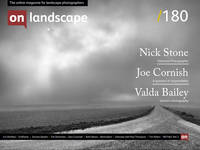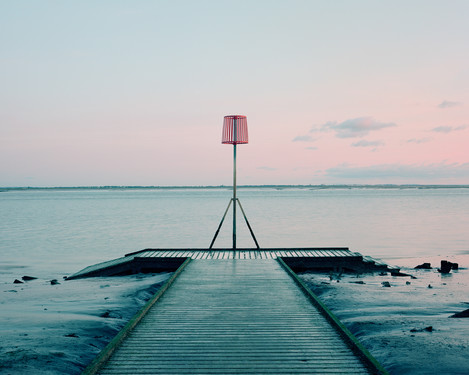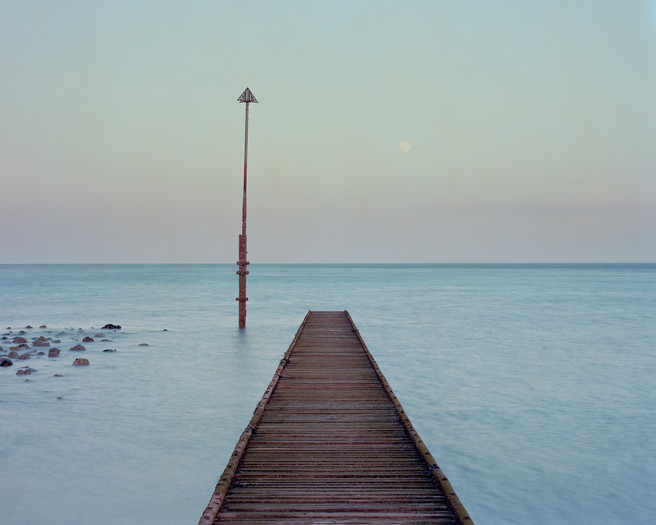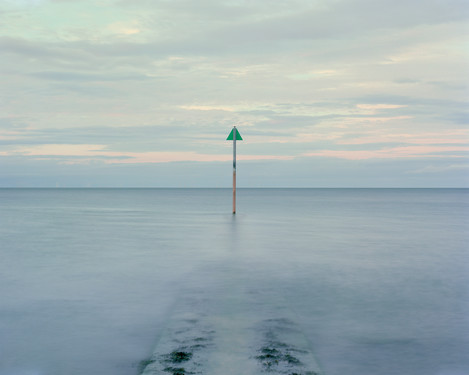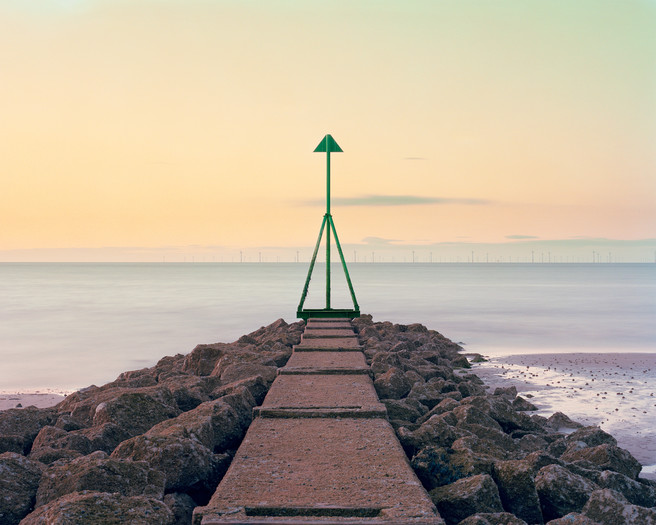Navigational markers around the coastline of the UK

Paul Thompson
Paul Thompson (b 1977 UK), graduated in photography from Newcastle Art College in 1999. He has since beed recognised and honoured by leading institutions , receiving both Gold and silver awards from the Association of Photographers, two Silver and one Bronze award from Creative Circle, a yellow pencil at D&AD. He was shortlisted for the Terry O’Neill Photography Award.
Thompson has exhibited three times at the National Portrait Gallery London, The Strand Gallery London, and his work has been featured widely in national and international print and online publications.

Charlotte Parkin
Head of Marketing & Sub Editor for On Landscape. Dabble in digital photography, open water swimmer, cooking buff & yogi.
When I read about Paul's project about photographing the navigational markers around the coastline of the UK, it sparked my interest. These markers are paramount for seafarers as they guide boats of all sizes into port. I became aware of them when I did a lot of yacht sailing on the south coast of the UK, but to most people, they would miss their significance and walk past them on the beaches and rocky shorelines. So what was it about these markers that drew Paul to travel around the coastline documenting them?
What sparked your passion for photography?
I was always into Art and Graphics whilst I was at school rather than academic subjects. I went on to study Art and Graphics for my A Levels; in my second year, I took up photography and really enjoyed it. However, I still applied for a graphics course at degree level and not photography. About two weeks before I was due to start the course, I decided I wanted to change and study photography and therefore take it to a more serious level.
You studied photography at Newcastle Art & Design College in 1999. Why did you choose to photograph the land as opposed to other subjects/genres?
Throughout the course, we studied many different genres of photography. This gave me an idea of what I liked and didn’t like.
No major deep-rooted reasons I don’t think why I chose landscape photography. I love being by the coast, I was brought up by the coast. I’m at my happiest being by the sea/coast, I’m also very happy being alone and in my own company so I think it was just a natural direction for me to combine them both.
Who inspires you the most both at the start of your photography and now? What books stimulated your interest in photography and drove you forward, directly or indirectly, as you developed?
This is a tough question and one I get asked a lot. If I had to pick one, I’d say Joel Sternfeld. I love both his landscapes and portraits. But there are many photographers and artists who inspire and influence me.
Tell us a bit about the project 'Navigate’. Where did it all start? What's your personal interest in this subject?
It all started while I was shooting a couple of other personal projects; Moonlight and -18 Degrees. These are all shot at full moon, in the middle of the night and the exposures can last up to 3 hours per image. It was at one location, in particular,
I arrived early, while the sun was just going down. I was sat in the car and this object caught my attention, a marker. I had time to kill so I went for a wander and walked down to the rocks/jetty and up to the marker. It had a strange and wonderful presence and atmosphere. As the tide was coming in and splashing up against the marker, the marker stood strong. Going nowhere. I then noticed others down the coastline, they were all different, but the same. They all almost had their own personalities but more importantly, served a very important purpose. It highlighted to me how we are just a small island. Vulnerable. With everything that was starting politically, I felt the need to document these posts and make them into a body of work in their own right.
How did the project evolve? Did you have to refine the vision of what you wanted to achieve?
The project grew and evolved as I starting shooting. I decided I wanted to shoot all around the UK and not just in one location. The distances got further, the travelling greater. Very early on I set myself a few rules; the same camera, same lens, same film, one sheet of film at each location.
How did you go about researching where they were and the locations? Were they all documented or did you have to do a lot of in-depth analysis to get the information? How did you decide which ones to include?
I researched just by foot really. Went to a location and walked for miles to see if I could find any. As I starting shooting them people would tell me of ones they knew of so sometimes they’d point me in the right direction. People have also said they are marked on maps but part of the appeal is just getting out and searching for them.
Tell us about carrying out the project. How long did it take and how did you decide in which sequence you chose to visit the locations?
It started in 2016 and I haven’t really put a stop to it, in theory, it’s still ongoing. I’ll continue shooting them as I find them, add to the collection and body of work. The beauty of all my projects is I can dip in and out of them and keep building the collection.
Were there any of the markers that you found particularly challenging to photograph or were in interesting locations?
The challenging part for all these shots was making sure a few things fell into place. The light and weather needed to be right firstly. I only shoot in a certain light, the tide needed to be at the correct point/level so I think this was the most challenging part and the part I couldn't control.
You mention painters in your artist’s statement; John Constable, Paul Signac, Edward Hopper and Winslow Homer. Did these paintings influence your aesthetic or narrative choices?
They do and did. I tend to look at painters for influence/inspiration. I find I prefer to draw inspiration from painters rather than looking at photographers and I don’t really watch many films. The painters referenced have a sense of calmness and silence that appeals to me. I try to incorporate this into my photographs.
You say in the narrative about the project "the sea– feral and primordial– and the markers– rigid and manmade– exist for just a moment in equilibrium. The form and composition of the Navigate photographs mirror my own experience making them." You chose to photograph the markers at sunset and left a lot of the composition to chance. How did you find this approach?
While I didn’t want these pictures to be about the sunset as such, often the last hour of the day is the best light of the day. With the long exposure and the movement with the sea and cloud, you never knew fully what you were going to capture and this is what appeals to me. In this digital age where everyone wants to see everything instantly, this is the total opposite. They are shot on large format film, no polaroid so I never know 100% what I have captured until I’m back in London and processed the film. The approach is stripped back, minimal and considered. You have to shoot with your instinct.
In the exhibition information, you write "Recalling Britain's identity as an island nation and co-incidentally beginning in 2016 when the country voted to leave the European Union. How much did this influence your project of documenting the markers and the importance of them on our coastline?
It was co-incidental. I didn’t initially set out to shoot this project because of what was going on politically. However, it did highlight to me that we are just this small island, surrounded by vast amounts of water which makes us very vulnerable. The navigation posts are such simple structures yet from a sailor's/seafarer's point of view they are so important. Because of what was going on politically it made me want to travel around and shoot around the country not just at one location.
You used a large format camera for this project. What made you choose this and did you make any special choices in camera, lenses and film?
I shoot all my personal work on 5x4 film. I don’t feel I have any connection with a digital camera and the slow, calm considered approach adds and helps my photographic style and approach.
What is next for you? Where do you see your photography going in terms of subject and style?
I have a couple of other projects that I’ve nearly completed but not shown yet. So, they will be out next and I'll put the images and information up on my website soon (www.paulthompsonstudio.com). In terms of where my subject and style are going, I don’t really overthink it or make any considered choices.
Exhibition
The exhibition of the project Navigate by Paul Thompson is open at Wren London, 21 March to 17 May.
Wren London: 39 Featherstone Street, London, EC1Y 8RE
All photographs are copyright to Paul Thompson, Courtesy Wren London.

